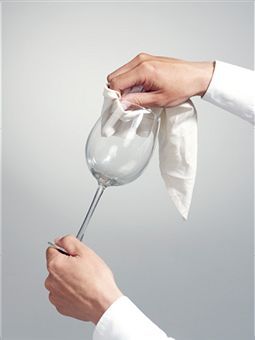
Clear glassware, in an array of colors and designs, refracting light into a number of colors, is a sight to behold. This is how brand new glasses look, when you have just purchased them from a cutlery store. However, as you use them, glassware can develop scratches, appear dingy and cloudy. Etching in the glass can be due to various reasons like mineral deposition, hard water, harsh detergents, and improper washing. A film tends to form on the surface, which dulls the glass. This, then becomes unsuitable for usage, and you may have to replace this glassware. However, you can now get back the lost luster of the glassware, at home. Mentioned below are some techniques to remove etching from glass.
Restoring the Lost Sheen
Spotting or clouding of glassware, along with a few scratches here and there, is inevitable. This occurs as the glass ages and also due to frequent washing. Etching can also affect decanters and vases, which have standing water in them. This stagnant water can corrode the glass and make it look dingy. Here are some methods to remove etching from glass, with the materials, easily available in every household. There are also a few chemical compounds which help smoothen the surface of the glass and remove scratches.
- Baking soda is an excellent means to remove etching from glass. Mix baking soda with a small amount of toothpaste and rub it on the scratches, with your fingers. Continue rubbing till you find the scratches disappearing. However, this method is useful only for glasses which have light etching.
- Vinegar is another effective agent to make the glass blemish-free. You can use white distilled vinegar on the glass to remove the stains. For this, wrap the glass in a vinegar-soaked dish cloth or paper towels for about an hour. Wash the glass and spray white vinegar to avoid further staining. Rinse the vinegar off and allow the glassware to dry completely.
- You can also use your nail polish remover for this purpose. Acetone, which is the main compound in the remover is known to smoothen the etching on the glass. Dip a soft cloth in acetone and rub it on the surface till you find the stains disappearing.
- Denture cleaning tablets are also handy when it comes to removing etching from glass. Pour hot water into the glass, which you have to clean. Dissolve a couple of cleaning tablets in the water and allow the solution to stand for approximately an hour. Take a toothbrush or bottle brush and scrub the sides. After this, rinse the glass properly to remove any residual chemical. In case, there is more than one item, fill a large tub with hot water in which the tablets have been dissolved and immerse the glasses. Follow the same method to remove etching.
- There are also several cleaning products available in the market, that polish off stains and scratches from the glasses. Strong cleaners like Goof Gone or Goof Off and even metal polishers are used to wipe off spots and cloudiness off the surface of cutlery. Rub the undiluted product on the surface till it becomes clear. Make sure you rinse it under running water to wash off any chemicals, that may have remained in the glass. Air dry and wipe them with a clean cotton cloth to avoid water spots.
These were some ways to remove scratches from glass and make them as good as new. Once you are done with removing etching from the glassware, wash them with hot water and a non-detergent based liquid. Dry them thoroughly with a cotton towel, before storing them away in a closet. At times, the etching can be deep that does not come off with the regular methods. In such a case, you can disguise the scratches with colored water, pebbles or marbles and use the glassware as a decorative piece. So if you have any old glassware at your home, follow these steps and remove the stained appearance from your cutlery.





